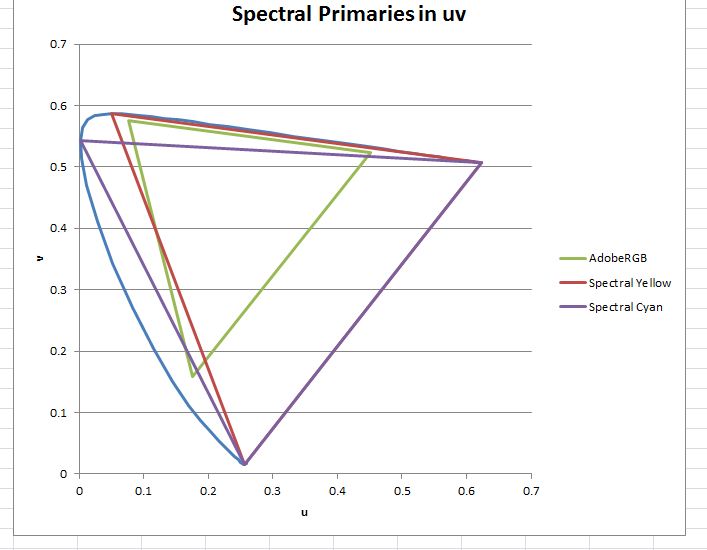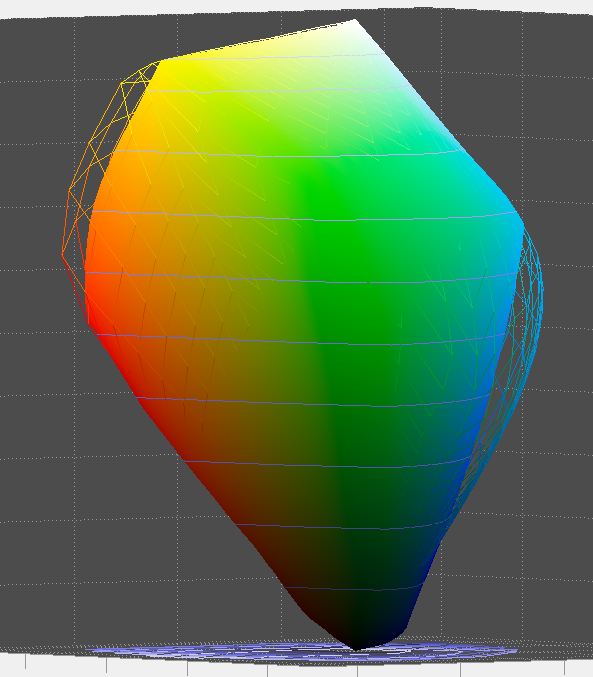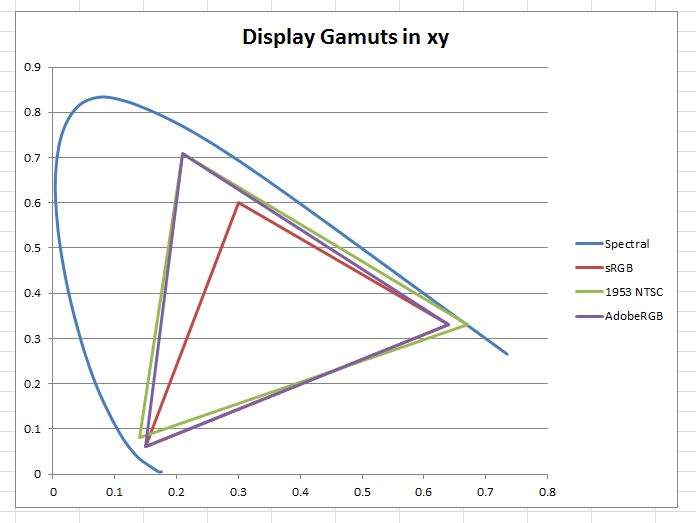What could be done to extend the gamut of monitors so that we can see all the colors we can print? With transmissive LCD monitors, there’s an inherent problem: if you make the red, green, and blue filters narrower so that the primaries are more nearly spectral, they pass less light and the display gets… [Read More]
Adobe RGB gamut limitations
In my last post, I made the assertion that, if you have a good printer, your printer can print colors you can’t represent in Adobe (1998) RGB, and therefore, you can’t see on a monitor with the Adobe RGB primaries. I’d like to use this post to give some examples. In all the pictures to… [Read More]
Can you use a wide-gamut display?
Kate Murphy recently wrote a New York Times article called, “Things to Consider When Buying a Monitor”. You can find it here. In the column, Murphy says, “…so you really have to make this decision on your own and that means you have to dive into the specs. Don’t glaze over. It’s not really that hard.” She… [Read More]
Be there for inspiration
One running theme of this blog is the unity of the creative process, no matter what the discipline. Here’s a quote from Rodney Crowell that appeared in an interview in the October issue of Acoustic Guitar magazine. Crowell is talking about songwriting, but it applies equally to photography. As an artist, you have to develop… [Read More]
Beyond easy
I’ve written before about getting to a point in a project where the very images that got me so excited in the beginning now look cheap to me. I used to dread that stage, but now I know it means I’m moving to the good part. But what if you never get there? Here’s what… [Read More]
- « Previous Page
- 1
- …
- 334
- 335
- 336
- 337
- 338
- …
- 384
- Next Page »


